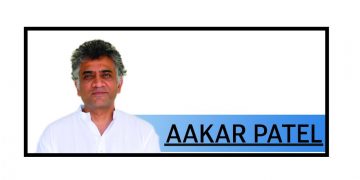Santosh Kumar Mohapatra
The easiest way a government can demonstrate success or camouflage failure is by distorting data instead of doing anything tangible. The present NDA government has relinquished ethical values and is politicising income statistics to prove that average growth during the NDA regime is higher than that during the UPA era.
Recently released back series data reveals that India witnessed lower rate of growth during the UPA years between 2005-06 and 2011-12 than what was estimated using the earlier methodology. GDP growth during the UPA years averaged 6.7 per cent, which is lower than the average growth of 7.35 per cent during the first four years of the present NDA-11 government and much less than 7.75 per cent in 10 years of UPA. But this is in sharp contrast with the back series data released by the National Statistical Commission headed by Dr Sudipto Mundle earlier this year.
Mundle’s data showed that best years of economic growth were the UPA years 2004-2014 with average growth rate of 8.36 per cent in UPA-I and 7.68 per cent in UPA-II against 5.68 per cent in NDA-I and 7.3 per cent in first four years of NDA-II.
The new back series GDP data denigrating the growth story of UPA has triggered debate and controversy with Congress dubbing new GDP figures misleading and alleging manipulation of data. However, the method of preparing the back series is largely the same as what is used to calculate the data using the new base. In reality, divergence in GDP data is due to new weights, splicing and manipulation of data by the government to prove that it has performed better than UPA.
The GDP puzzle is due to figures of the past years being recalculated with new and more recent weights. When longer series are required, they are calculated by splicing or merging old series with new ones. In theory, national income in the 1900s could be recalculated using the weights of 2011-12. But it would make no sense because many goods and services of today did not exist 100 years ago, and many that were important then are no longer so.
Further, recalibrating past figures with recent weights is not only wrong, but also bizarre. For instance, the banking department of the Reserve Bank of India, which does not produce any business, is ironically now treated as a market enterprise. Similarly, stock broking has been included in GDP, which is just markets and does not produce anything. The reason for difference in GDP figure is also due to adoption of splicing method owing to the limitations of the availability of data.
Splicing method is to make provision for the appearance of new items or the disappearance of items previously in use. As splicing has been applied for preparing the estimates in construction sector entirely and applied partially in agriculture and allied sectors, gas, trade, repair, hotels and restaurants, real estate, ownership of dwelling and professional services, public administration and defence and other services, it might have been maneuvered to show lower growth during the UPA regime.
While calculating GDP, in new methodology, Ministry of Corporate Affairs (MCA-21) database forms the basis of the entire corporate sector growth estimates. But the problem is unavailability of matching data for the older series. The key difference between the two was that the old method measured volumes — actual physical output in the manufacturing sector, crop production, and employment for the services sector, while the MCA-21 database is linked with balance sheet data of each company and aggregating the performance of the sector after adjustment for inflation. But MCA-21 was not particularly stable before 2010-11 and simply did not exist before 2006-07.
The NDA government has relinquished ethical values and is politicising statistics to prove that average growth during its regime is higher than that in the UPA era
What is outlandish is that the new GDP series is not in synchronisation with other available economic indicators such as investment trends, bank credit growth, tax collections, corporate earnings, sensex, and foreign trade among others. The GDP growth under Modi government is pegged higher when all other economic parameters pointed downwards. For example, between 2006-07 and 2011-12, average growth in bank credit stood at 20.3 per cent. Between 2012-13 and 2017-18, average growth fell to 12.3 per cent. There has been similar slowdown in India’s foreign trade in the last four years. Our exports did not cross $315 billion mark in March 2014. Jobs have also declined.
Tax collections, empirically proven to correlate well with GDP growth, also show conflicting trends. The tax buoyancy, both at Central and state level was also greater during the UPA government. However, indirect tax is regressive and the recent rise is also due to increase in excise tax on petroleum products.
There is deceleration in investment rate from 39.8 per cent in 2010-11 to 30.6 per cent in 2017-18 and decline in gross savings rate to 29.6 per cent in 2016-17 from 36.2 per cent in 2010-11.
Probably the government has invented new methodology to show higher growth during its rule.
The author is an Odisha-based economist. e-Mail: skmohapatra67@gmail.com.






































